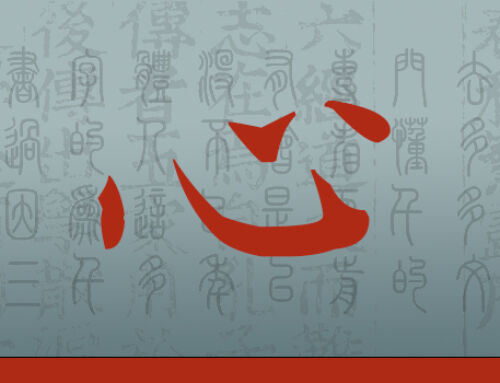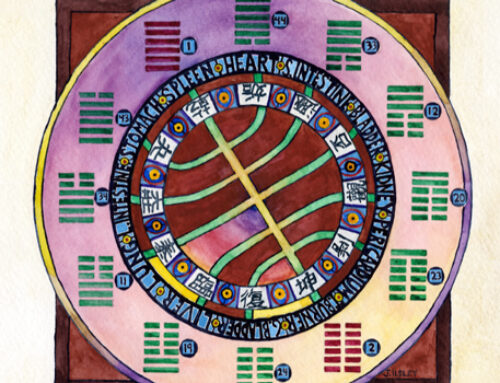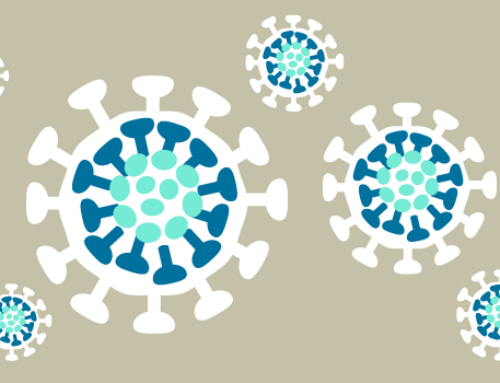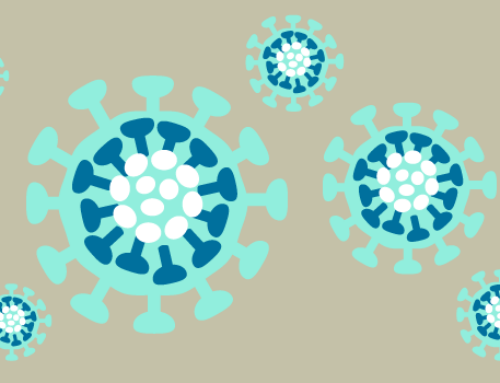A collection of relevant classical sources
Collated and Translated by Heiner Fruehauf
National University of Natural Medicine, College of Classical Chinese Medicine
According to the five phase element system, the lung is classified as a metal organ. Modern Chinese medicine discourse, therefore, has exclusively focused on this organ’s association with the metal season of fall. In original Neijing cosmology, however, the five phase system is paralleled by a more complex and inclusive system of twelve functional entities that correlate the twelve months of the year with the order of the twelve channel systems that we now refer to as the “organ clock.” In this system, which does not contradict but rather amend the simpler view of lung metal function, lung function is likened to the energetics of the first month of spring. By studying classical sources about the first month, therefore, we can recover valuable and clinically practical information about deeper aspects of lung physiology/pathology that are otherwise not overtly expressed in the Neijing itself.
Theme of heaven and earth intercoursing and spawning life:
- Liji (Yueling): 6.8角墩冷, 莖氣苟슉, 뒈氣騰, 莖뒈뵨谿 “In this month the vapors of heaven descend and those of earth ascend. Heaven and earth are in harmonious co-operation.” (Legge, 255)
- 攣墩랗墩, 莖氣迦렘, 뒈氣迦發 “During the first and second month, the heavenly qi begins to release, and the earthly qi begins to spring forth” (Huangdi neijing, chapter 16)
- Quan shanggu sandai Qin Han sanguo liuchao wen: 푼웸슥揭 “[During the first month] Qian (heaven) and Kun (earth) are intercoursing.” (見《書鈔》寧겟巧枷巧, 《蓺匡類앱》巧, 《겜悸》)
Theme of beginning, commencement, initiation:
- Liang Yuan Di zuanyao (졺禱뒨裡狼):攣墩犢촙陽, 촙瘢, 뉴, 開뉴, 發뉴, 獻뉴, 看뉴, 看歲, 獻歲, 發歲, 놓歲, 凉歲, 렐歲, 華嵗 “The first month is called First Yang, First Gathering, Top of Spring, Opener of Spring, Issuer of Spring, Presenter of Spring, Head of Spring, Head of the Year, Presenter of the Year, Issuer of the Year, First of the Year, Commencer of the Year, Fragrant Initiator of the Year, Blossoming Bud of the Year (see SKQS, Suishi guangji)
Theme of North-East (corner where yang qi is first born):
- 8.7.1攣墩為瘢 “The first month is represented by the Fish Corner” (Erya, chapter 8). This passage from China’s oldest extant dictionary, which continues to give one-character epithets for each of the remaining months, is perhaps one of the most meaningful in terms of symbolic information on the first month from pre-Han times, yet it is also most difficult to interpret (due to the archaic nature of the characters used). It has been demonstrated that the twelve characters used in this passage are names for twelve archaic month gods that presided over the functions of each month (see Noel Barnard, “The Twelve Peripheral Figures of the Ch’u Silk Manuscript”). Zou means to gather, as in the accumulation of yang qi that is now taking place; it means corner, especially the north-east corner of the cosmograph where the year officially commences during the first month, when the Dipper and the Sheti stars point at it; and in some southwestern dialects it means fish, resonating with Western astrology where the asterisms Shi and Bi associated with the first month belong to pisces–fish. On the terrestrial sphere, Zou is the name of an ancient township in the northeast of China, at the foot of Mt. Tai in today’s Shandong Province. This is the place where Confucius was born and where his ancestors held office.
Theme of (returning) yang qi emerging/manifesting at the surface:
- 角믐陽氣鹿攣墩迦놔異뒈, 搗養長異 〜 믐陽氣놔異東굇, 흙異鮫굇, 發異촙뉴, 畢異촙땝, 랍膠칭꼇應角. 陽迦놔, 膠腦迦놔 “The first month is the time when the yang qi first emerges from the earth, and now begins its work of nourishing and growing above ground… Thus yang qi emerges in the northeast, goes back inside in the northwest, starts in the first month of spring, and is finished in the first month of winter—and there is not a single living creature that does not respond to its lead. When the yang first emerges, all plants and animals also begin to come out.” (Dong Zhongshu, Chunqiu fanlu [Heavy Dew on the Spring and Autumn Annals], chapter 11)
- 攣墩陽氣凍썩뒈氣랍놔冷 “During the first month, the yang qi frees the earth qi from its icy shackles and causes it to emerge” (Huangdi neijing, chapter 49).
Theme of emerging plant life:
- 攣墩〜, 페樹楊 “The signature tree of the first month is the aspen” (Huainanzi, chapter 5)
- 東門裂楊, 페葉로로 “The aspen at the Eastern Gate, abundant [like leaf-shaped lungs] are its leaves” (Shijing, chapter on the Songs of Chen). Creation of etymological word field that links 로 (leaves of the lung) and 톤 (abundant water in the Yellow River) and 杮 (abundant foliage [of the willow])
Theme of (return of) water:
- 龜냥뒨時, 와唐薦衿匡慨宮흔諒, 렘슨妊맵홋揭畤、뢰陰빈皐, 鹿헹繼塏, 梁衿덤詔넓츠裂磎. 攣墩, 從맵홋, 還犁맵홋賦鹿風 (Hanshu, chapter 3) This Han dynasty quote from the biography of the writer Yang Xiong illustrates that the first month of spring was the time when the freshwater in nature returns (in the form of both rain and river/spring water). According to Han dynasty yin-yang cosmology, yang leads and yin follows. When yang (fire) returns, therefore, yin (water) will naturally follow. At this time, sacrifices were made to the nature spirits to ensure the return of this water of life, often referred to as “sweet spring water” (ganquan). Yang Xiong is the author of the famous ode “Ganquan Fu” (Fresh Water Ode), which was set to music and often performed during the rituals of the first months.
Theme of yin-yang balance:
- 攣墩裂迦, 攣墩裂遜, 접뉴裂際, 겟覲쌉斷, 城宬왕虛, 횔랍寧벽寧溫“From the time of the first month onward, starting with the ritual sacrifices at the Beginning of Spring, the 100 punishments/shackles are put to an abrupt end, the prisons are emptied, and in nature one part cold co-exists with an equal amount of warmth” (Lunheng, chapter 41). This quality of yin-yang balance during the first month introduces the aspect of balance, harmony, cooperation, peace, and equality that plays such an important role in the story of the lung: One part yang and one part water; one part north and one part east; one part wood and one part metal; one part cold and one part warm; one part moist and one part dry; one part black and one part white; one part inside and one part surface; one part releasing and one part keeping the lid on; one part freedom and one part restraint; one part wildness and one part civilization; one part qian and one part kun; one part heaven and one part earth; one part spiritual and one part physical (“lung qi” is comprised by an equal amount of each of these yin-yang aspects).
Theme of “opening the door” to the return of the warming light forces of life:
- Liji (Yueling): 페佾戶 “Its sacrifice is that at the door” (Legge, 251)
Theme of dance as an (earthy) celebration of the return of the earthly life force:
- Liji (Yueling): 6.9角墩冷, 츱樂攣흙學習校 “In this month orders are given to the chief director of music to enter the college, and practice the dances with his pupils.” (Legge, 255)
Theme of sacrificing in gratitude to the bestowers of earthly life forces:
- Liji (Yueling): 켄脩셈듕. 츱佾주뇽澤 “The canons of sacrifice are examined and set forth, and orders are given to sacrifice to the hills and forests, the streams and meres.” (Legge, 256)
Theme of safe-guarding and kindling the initial expressions of the (returned) life force:
- Liji (Yueling): 犧嬌痰攸. 6.10쐐岺램컁. 嬌림남, 嬌殺벚蟲、怯、万、飛鳥. 嬌麛、嬌쫓 “Care being taken not to use any female victims (not to destroy the life unborn). Prohibitions are issued against cutting down trees. Nests should not be thrown down; unformed insects should not be killed, nor creatures in the womb, nor very young creatures, nor birds just taking to the wing, nor fawns, nor should eggs be destroyed.” (Legge, 256)
Theme of avoiding images/actions of death, war, and destruction:
- Liji (Yueling): 拿汰찔胔. 6.11角墩冷, 꼇옵鹿稱깡, 稱깡극莖亂 “Skeletons should be covered up, and bones with the flesh attached to them buried. In this month, no warlike operation should be undertaken; the undertaking of such is sure to be followed by calamities from Heaven.” (Legge, 256)
Theme of commencement of agricultural activities (by surveying, planning, instruction, setting standards, dissemination of information):
- Liji (Yueling): 6.7角墩冷, 莖綾켄鹿禱휑편穀黨뒨. 켄擇禱낸, 莖綾親載駿仲, 대裂黨參괏썽裂徒間, 帥힛무씽헉諸븜댕뤼, 묫뫈뒨썲. “In this month the son of Heaven on the first day prays to God for a good year; and afterwards, the day of the first conjunction of the sun and moon having been chosen, with the handle and share of the plough in the carriage placed between the man-at-arms who is its third occupant and the driver, he conducts his three ducal ministers, his nine high ministers, the feudal princes and his great officers, all with their own hands to plough the field of God.” (Legge, 254)
- Liji (Yueling): 珙츱꼈農慤, 츱逕東슨, 쌉脩룐쉰, 審똥(經)〔徑〕術. 宮헴쥬、搬險、覩絆皐뒈杰露, 巧穀杰簾, 鹿싱돛췽, 극묫親裂. 逕慤셜飭, 邱땍準殮, 農켄꼇상. “The king gives orders to set forward the business of husbandry. The Inspectors of the Fields are ordered to reside in the lands having an eastward exposure, and see that all repair the marches and divisions of the ground, and mark out clearly the paths and ditches. They must skillfully survey the mounds and rising grounds, the slopes and defiles, the plains and marshes, determining what the different lands are suitable for, and where the different grains will grow best. They must thus instruct and lead on the people, themselves also engaging in the tasks. The business of the fields being thus ordered, the guiding line is first put in requisition, and the husbandry is carried on without error.” (Legge, 255)
Theme of seasonal landmark (setting correct standards at the outset):
- 郊菱瞳뮴, 曆쉔攣鱗異촙뉴 “Since ancient times, the standard landmark of time for the correct calculation of the calendar has been set at the first month of spring” (Shiji, chapter 3)
- 角믐謳鹿촙뉴為攣, 凌鹿센땝為攣, 鷺鹿輅땝為攣, 謳鹿枷힛墩為攣, 붚, 鹿틱뎀為腔 “The Xia dynasty thus took the first month of spring as their standard seasonal landmark, while for the Yin (Shang) dynasty it was the last month of winter, and for the Zhou dynasty it was the second month of winter. For the Xia, the 13th month as standard landmark of time was associated with the color black, and within the cycle of the day corresponded with the hour of pingdan (Peace Before Dawn, 3-5 am).” (Shangshu dazhuan, chapter 3)
- 뤼짇氣諒, 契唐늴, 岺唐貫, 믐끽鹿攣墩腔휑틱뎀視裂, 뗐페貫랍列페杰瞳錄. 運唐餘, 페逞邱, 運꼇섟, 페逞遜, 늪莖裂돛, 氣裂끽冷. 運렷唐餘렷꼇璃, 角謂攣歲, 페逞當페時冷 “The movements and seasonal dominance of the six qi have order and direction. Customarily, their respective quality during a specific year is assessed during the pingdan hour (3-5 am) of the first day of the first lunar month. If the prominent qi phase will be in a state of excess, its influence will arrive before this time; if it will be in a state of deficiency, its influence will be observed only after this time segment for standard measurement has passed—this is the way of heaven and the standard according to which qi circulation expresses itself. If there is neither excess nor deficiency, then this is called a right-on year, and the influence of the respective qi phase will make itself known at exactly this time.” (Huangdi neijing, chapter 71)
- 촙뉴迦逞, 黃뒨邏麟, 臨觀검極, 攣검風裂氣 “At the time when the first month first arrives, the Yellow Emperor sits down dressed in ritual swallow regalia and carefully surveys the eight directions of the compass, in order to assess the standard quality of the eight seasonal winds for the year to come.” (Huangdi neijing, chapter 79)
- 離騷經犢: 攝瓊貞黨촙瘢. 갭: 漢莖匡羚:굇떱펌槿雍攜龍실, 뷜凌켓떱, 웡藜參看, 痰삭쉔諒雍, 拈곕쉔諒뷜, 틱뎀쉔諒웡; 흔촙뉴삭時雍쉔泥, 拈곕뷜쉔泥, 틱뎀웡쉔泥冷. 攝瓊, 槿츰, 瞳龍실裂兩텃, 몹唐힛槿땋璃, 鈞裂殮떱깨杰寧鹿쉔枷랗낸諒冷. 廬, 攣冷;촙, 迦冷, 謂촙뉴冷. 瘢, 袋冷. 泥墩犢瘢, 葢角墩촙뉴삭時龍실攝瓊槿見瞳東굇袋, 隨떱깨寧泥, 믐鹿為츰冷. ”The classic Lisao contains the line ‘the true standard of the Sheti lodge is obtained at the First Corner.’ In the Astronomical Annals of the Han this concept is clarified in the following way: The handle of the Seven Stars of the Dipper flanks the Horns of the Blue-green Dragon, the yoke of the (northern) Dipper nudges close to the Southern Dipper, and the bowl of the Dipper cradles itself at the head of the Shen constellation. The handle is used as a directional pointer at dusk, the yoke is used as a directional pointer at midnight, and the bowl is used as a directional pointer at twilight. This means, for instance, that during the first month of spring the handle establishes the (earthly branch) position Yin on the celestial dial at dusk (by pointing at it), at midnight it is the yoke that establishes the proper location of Yin, and at the twilight hour it is the bowl that confirms Yin. Sheti is the name of a pair of star clusters that hug the Dragon’s Horns. Both of them contain three stars that are shaped like a tripod. This star formation aligns itself with the movements of the Dipper, and alongside it establishes the seasonal (earthly branch) positions on the celestial twelve dial… The month when the position Yin is established is called ‘The Corner Month,’ which is the month when the Sheti star formation next to the Dragon’s Horns is visible in the northwest corner of the sky, and alongside with the movements of the Dipper is pointing at the Yin position.” (from Yuan dynasty text by Dai Liang, Jiulingshan fang ji [A Collection of Writings from the Study Beneath Nine Spirit Mountain], vol. 26, p. 13; in Siku quanshu)
Theme of governance over the standard of time (associated with emperor Zhuanxu):
- 顓頊鹿쏟裂촙뉴攣墩為禱. 페時攣墩腔뎀접뉴. 巧槿會黨莖厤營杆冷. 깥凍迦悉. 蟄蟲迦發. 雞迦힛號. 莖犢鱗時. 뒈犢鱗끗. 훙犢鱗樂. 鳥獸萬膠. 칭꼇應뵨. 믐顓頊聖훙為厤杆冷. “Zhuanxu first designated what is now called the first month of spring as the beginning of the year. The exact time for this source point in time is the first day of the first month’s Beginning of Spring period. (At Zhuanxu’s time), the five planets met (then) in the heavenly Calendar Office, namely the Shi constellation. The ice first melts at this time, the hibernating insects start coming out of their burrows, and the chickens begin to crow three times. In the heavenly plane, this is the time when the wheel of the seasons begins and time is created; on the earthly plane, this is the time when everything flourishes; and in the human sphere this is the time when music and merry-making emerge. The birds, the animals, and all living things respond in kind. Thus the sage Zhuanxu became the Official of Calendric Calculations and Measurements.” (See Quan shanggu sandai Qin Han sanguo liuchao wen, chapter on sanguo wen, quoting the Lüli zhi section of the Jinshu)
- 顓頊肝츱. 歲瞳蜀韋. 衛앙페뒈. 腦瞳蜀韋. 믐뉴헬傳犢. 衛顓頊裂亘冷 “When Zhuanxu received the mandate of heaven Jupiter was in the Shiwei constellation (alternate name for Shi). He took up residence in the State of Wei, which is the earthly territory associated with the Shiwei constellation. Therefore it is written in the Spring and Autumn Annals that ‘the state of Wei is the realm of Zhuanxu.’” (See Quan shanggu sandai Qin Han sanguo liuchao wen, chapter on sanguo wen, quoting the Wen Di ji of the Weizhi).
- 謂裂顓頊부?顓諒、專冷. 頊諒、攣冷. 콘專攣莖훙裂돛, 믐謂裂顓頊冷 “What does emperor Zhuanxu’s name mean? Zhuan means to measure with a standardized instrument, and Xu means straight, standard, correct. He was able to set a correct standard for uniting the pathways of heaven and humanity, therefore he was called Zhuanxu.” (Baihu tong, chapter 2)
- 耑, 膠놓裂題 (똥) 冷. 蹶近, 苟蹶몽冷. ”The character Duan 耑(original version of Zhuan 顓)is an image of a plant when it first sprouts. Above it looks like budding plants (the basis for the character , to give birth), and below it looks like roots.” (Shuowen jiezi) The oracle bone version of this character is a pictogram of a weed breaking its head through the ground, supported by roots underground, and encouraged by raindrops above. (see Jiagu wenzi gulin, volume 1, 840) Note that the characters duan耑, duan 똥, zhuan 顓, and yuan 禱are all etymologically synonymous, meaning both beginning and end. Specifically, they are often used to designate chun 뉴, spring (in the oracle bone record, 耑휑is most likely 뉴휑). An interesting analysis by the contemporary philologist Chen Shihui suggests that the character 耑is a combination of 裂 (emerging at the top)and 꼇 (image of weed roots that look like hair, or a person planted upside down in the ground); the combined image thus shows the “plant head” emerging from the ground (JGWZGL 1, 841). In the light of these most ancient etymological clues, it makes sense that the name Zhuanxu literally means “Head that Emerges in Spring.” (for the discussion of bladder symbolism, take note of the pairing of 耑 (spring: “yes;” plant head is emerging from the ground) and 꼇 (fall: “no;” plant head is entering the root phase).
- Zhuanxu therefore related to fish and pig totems, both representatives of winter (pig is beginning of winter, fish is end of winter); fish is a definite reference to pisces, see SHJ.
Theme of ecology (adherence to the laws of nature):
- Liji (Yueling): 嬌變莖裂돛, 嬌絕뒈裂잿, 嬌亂훙裂紀. ”No change in the ways of heaven is allowed; nor any extinction of the principles of earth; nor any confounding of the bonds of men.” (Legge, 257)
Theme of observing and recording cosmic laws as a time-honored tradition:
- Liji (Yueling): 鱇莖휑墩槿낸裂契, 拒離꼇貸, 嬌呵經紀, 鹿놓為끽. “[The emperor orders the Grand Recorder to] especially to observe the motions in the heavens of the sun and moon, and of the zodiacal stars in which the conjunctions of these bodies take place, so that there should be no error as to where they rest and what they pass over; that there should be no failure in the record of all these things, according to the regular practice of early times.” (Legge, 254)
Theme of establishing and upholding the principles of law:
- Liji (Yueling): 6.6켄츱댕袈磵듕룽랬 “[The emperor] also orders the Grand Recorder to guard the statues and maintain the laws.” (Legge, 254)
Theme of restraint (restrained exuberance); yang is on the move, but (actual) temperature is still cold; implying restraining function of the law:
- 49.1 攣墩陽氣놔瞳, 랍陰氣佳, 陽灌돤菱늴冷” During the first month the yang is appearing in the upper position, yet the yin qi still has the upper hand, therefore the yang does not get to rule yet” (Huangdi neijing, chapter 49). See notes on the theme of yin-yang balance above: during the first month, the yang force is empowered to take the momentum, but the physical reality of the human environment is still dominated by yin (cold) qualities. In the development of the multi-layered themes associated with the first month, the restraining influence of this cold “envelope” in nature is associated with the restraining function of the law in a social context.
- 攣墩裂時, 莖를淒쟘, 쟁語:「댕嵌瞳펌, 댕벽瞳寧. 」寧謂攣墩冷, 훙소꼇콘們템異, 脫廖裂擄, 긱為風벽杰櫓, 鹿蠣섣, 蠣섣꼇住, 价空극錄 “During the time of the first month, nature is still filled with quite a chill, therefore the saying ‘big heat in the seventh (month), big cold in the first (month).’ It is thus also said that during the first month people should not exchange their seasonal wardrobe for thinner layers of garments yet, nor take off their clothes, otherwise wind cold influences will invade the body and cause skin eruptions, which in turn can potentially cause death if not healed in time.” (Fengsu tongyi, chapter 11)
Theme of dissemination:
- Liji (Yueling): 6.5츱宮꼈돠뵨즈, 契慶嘉쁨, 苟섟兩췽 “[The emperor] charges his assistants to disseminate lessons of virtue and…bestow his favors.” (Legge, 254)
Theme of rulership of space/matter (associated with Sikong, the Minister of Works):
- 攣墩바鱇왕 “The officer associated with the first month is the Minister of Works” (Huainanzi, chapter 5)
- 鱇왕寮뒈 “The Minister of Works is in charge of the earth” (Baihu tong, chapter 7)
- 鱇왕廊곡皐, 앙愷췽, 時뒈적 “The Minister of Works is in charge of the state’s land, and of managing the four classes of subjects (scholars, peasants, workers, and traders), and the timing of land productivity (Shangshu, chapter 48)
- 5.39鱇왕執똑, 똑뒈, 앙췽뇽앰澤, 時愷時. 좆뒈遠쐤, 興慤훨제 “The Minister of Works is the arbiter of laws and measurements. He assesses the features and properties of the land; he manages the people, the mountains and rivers, the wetlands and lakes; and he times the seasons. He measures the distances in the land, and prompts the labor of the people” (Liji, chapter 5) ±품漢·쪼歷羚×똑諒, 롸당넹狼多冷, 杰鹿똑長똬冷. 굶폅異黃鐘裂長, 鹿綾穀秬敢櫓諒, 寧敢裂廣, 똑裂씽枷롸, 黃鐘裂長, 寧爲寧롸, 枷롸爲당, 枷당爲넹, 枷넹爲狼, 枷狼爲多, 랍巧똑審錄
- 2.6苟잿웸돛, 뵨푼밟, 謂裂鱇왕. 《굇慊書鈔‧設바꼬》、《格틱徒覽‧職바꼬》”To regulate the way of earth below, and to harmonize it with the light of heaven above, that is the function of the Minister of Works.” (Hanguan liuzhong, chapter 2) Note that this is the precise function referenced by hexagram 11 (Tai), which is about the “intercoursing of qian/heaven and kun/earth” (mentioned as a theme in itself above, as well as in the description of hexagram 11).
- 껍悳鱗鱇왕 “Master Yu served as the Minister of Works” (Shangshu, chapter 2); 悳鱗鱇왕, 틱彊皐 “Yu served as the Minister of Works, leveling the waters and the soil” (Qian Han ji, chapter 5)
- 溝瀆雝락, 彊為췽벧, 則責裂鱇왕 “When the irrigation ditches are plugged up and cause flooding, and the waters are causing calamity for the people, then the Minister of Works needs to be called upon” (Shangshu dazhuan, chapter 1); 쥬굼쌩, 뇽믄꼇직, 巧穀꼇濂, 꿇컁꼇챦, 則責裂鱇왕 “When the mountains and hills erode via mudslides, and when the rivers and streams are not flowing, and when the five kinds of grain are not growing, and when vegetations does not flourish, then the Minister of Works needs to be called upon” (Han shi waizhuan, chapter 8)
- 똑좆꼇審, 舉慤呵잿, 떼궜꼇脩, 財膠呵杰, 犢貧. 貧則飭鱇왕 When standards and measurements are disregarded, when human actions are executed without principle, when the sense of good and evil is not cultivated, and when material goods are improperly distributed, then this is called poverty. When there is this kind of poverty, then the Minister of Works needs to diligently work to rectify the situation. (Kongzi jiayu, chapter 25)
- 健쨌灣, 契輜撈, 賦狼엇, 處軍輯, 쒜竈繫, 늪鱇왕裂바冷 “To make the roads swiftly passable, to organize the supply routes, to adhere to even building standards for military camps, to settle the troops in an organized fashion, to make sure that wells and hearths stay open, these duties belong to the Minister of Works” (Huainanzi, chapter 15)
- 誇東짇槿, 兩兩宮궐, 犢鱇왕 “The six stars east of the Wei constellation, arranged in pairs of two, are called the Minister of Works” (from the “Tianguan shu” of the Shiji, chapter 3). Note that these stars are located in the direct vicinity of the Shi constellation, which is associated with the first month. The later Yuanming bao adds that these stars are “in charge of water flow.”
© 2009 Heiner Fruehauf









Leave A Comment
You must be logged in to post a comment.